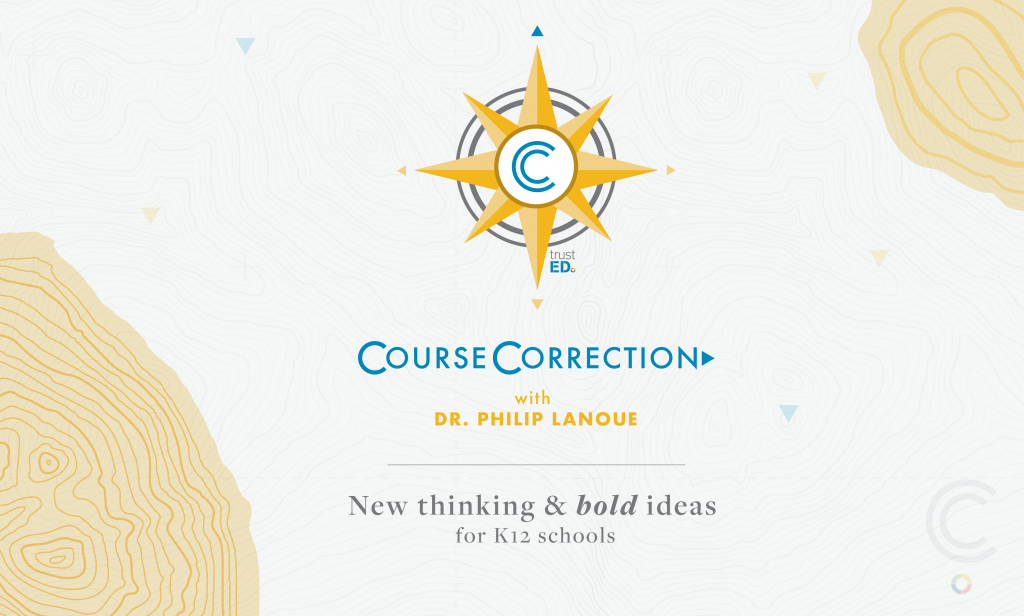With the new school year upon us, what will you as a leader do differently?
During a presentation last month at the Google California Education Summit, it became clear to me, AGAIN, that we can no longer design schools that don’t prepare kids for a successful future. We can’t continue to lead with beliefs and plans from the past.
Sadly, we know most school systems are NOT:
- Meeting the needs of all children
- Preparing students with skills for the 21st century
- Taking advantage of unique and emerging programs that tap into community assets (schools without boundaries)
- Taking advantage of new digital tools to engage students
- Understanding the impact of social trauma on student learning
Yet, we fail time and again to re-examine old habits by continuing to adopt yearly agendas that don’t transform schools. Change requires action by leaders throughout the system–starting with the superintendent.
Think about it.
How many presentations have you either attended or led that outline critical changes in schools? Now, how many of those changes have occurred in your schools?
Change takes time. But it can’t take forever. When it comes to meeting the needs of students and families and preparing kids for the future, sometimes tomorrow is too late.
School superintendents and others need to step up and out of their comfort zones to make change. As my colleague, Dr. Sally Zepeda, and I recently wrote:
The work of the superintendent to create a culture where all students thrive and achieve can no longer be an aspiration. A culture of student success must be a requirement that is non-negotiable…requiring significant changes in leadership roles and responsibilities.
For more on transforming school leadership in your district, sign up for the TrustED newsletter.
The most significant shift for creating an education system that works for all students recognizes that student success is a collective adult responsibility and not a student problem.
Do you believe, and do you lead systems where:
- The role of the superintendent extends well beyond the traditional boundaries of schools?
- Multiple metrics beyond single test scores lead to good decisions?
- The dynamics of the community landscape is understood and impacts school programming?
- The system is built on the individual interest and needs of students?
- Along with teacher development, leadership development across the system and community is central to sustained school transformation?
- The digital culture has the potential to close the achievement gap?
- The strategic plan and all actions of the district are aligned, and you have evidence that all students are impacted?
- There is balance in the personal and professional lives of the adults in your district as they support students in navigating their learning journey?
How do your responses align to the work you are doing now? Systematic change can only occur when school leaders, starting from the top of the organization chart down, have clarity in rationale, direction, and process.
How important is effective school leadership at every level? Ridge-Lane Limited Partnership describes the importance of leadership in sustaining systems:
With 80-85% of school and school districts budgets allocated to staff, leadership capacity must be developed at all levels within the organization. Schools and school districts who focus strategic efforts on developing leadership capacity across all sectors of the system will reach long-term goals quicker with the capacity built to sustain outcomes. Most high functioning systems have built in opportunities for planning, improving and collaboration as well as leadership development.
Leaders can no longer stand up and reference what we should be doing to make change, they need to take decisive action. Superintendents and others must take on the challenges of sustained change by reimagining how they lead their schools. The time is now.
As a new school year dawns, are you rethinking your role as a leader in your school or district? Tell us how in the comments.
For more insight into the emerging role of leaders, read The Emerging Work of Today’s Superintendent: Leading Schools and Communities to Educate All Children. Dr. Philip Lanoue and Dr. Sally Zepeda’s goal in writing this book published by Rowman & Littlefield, and as a joint publication with AASA, is to engage superintendents and leaders by asking different questions about their roles in leading schools and communities.
